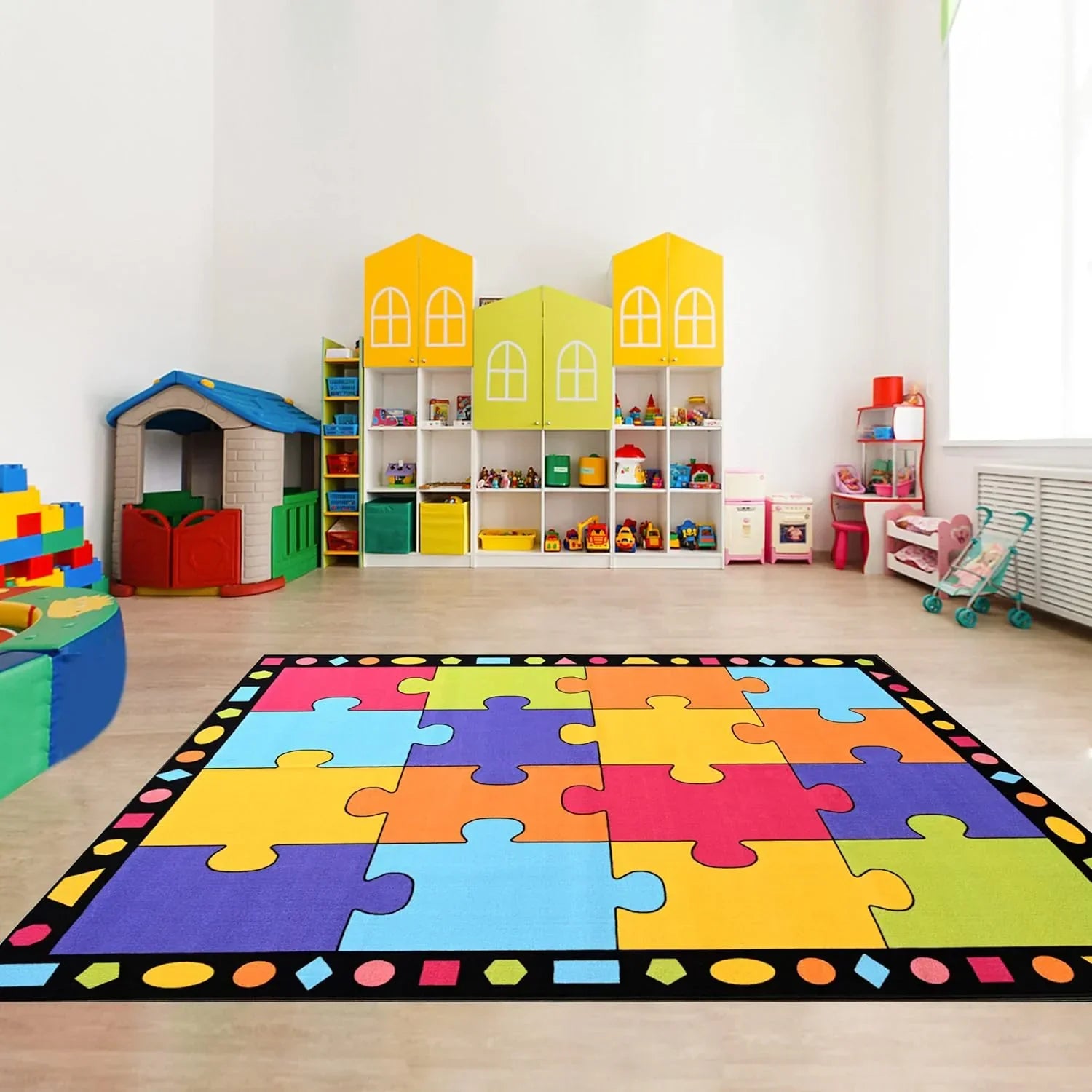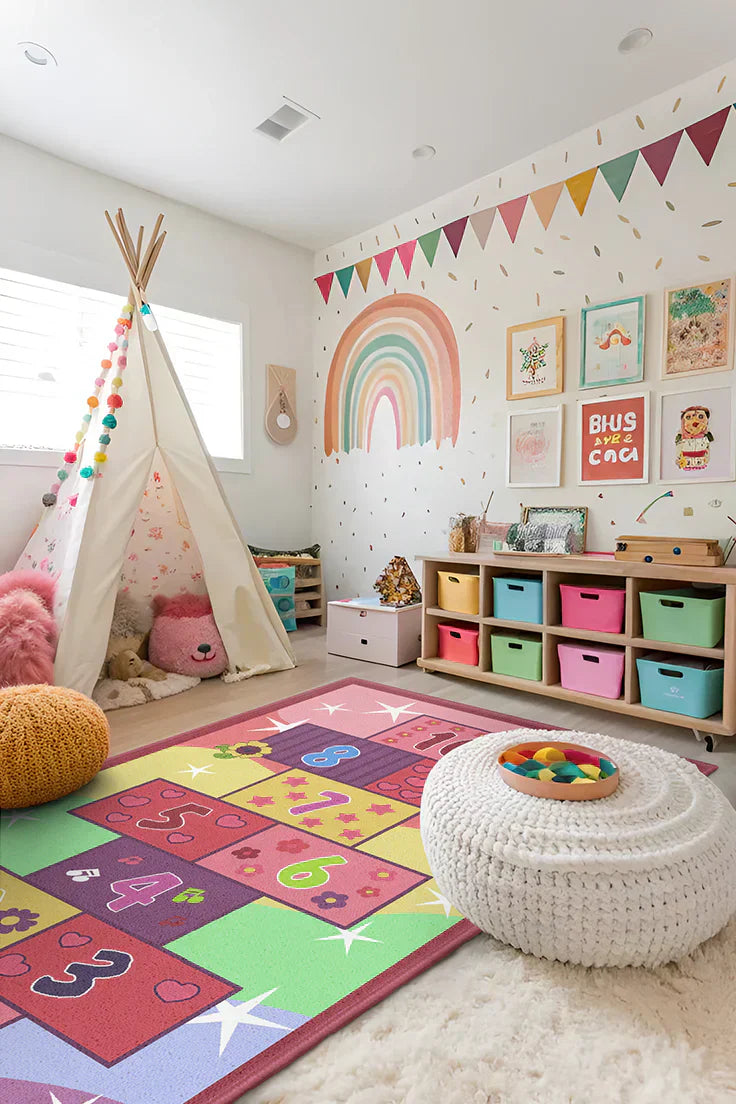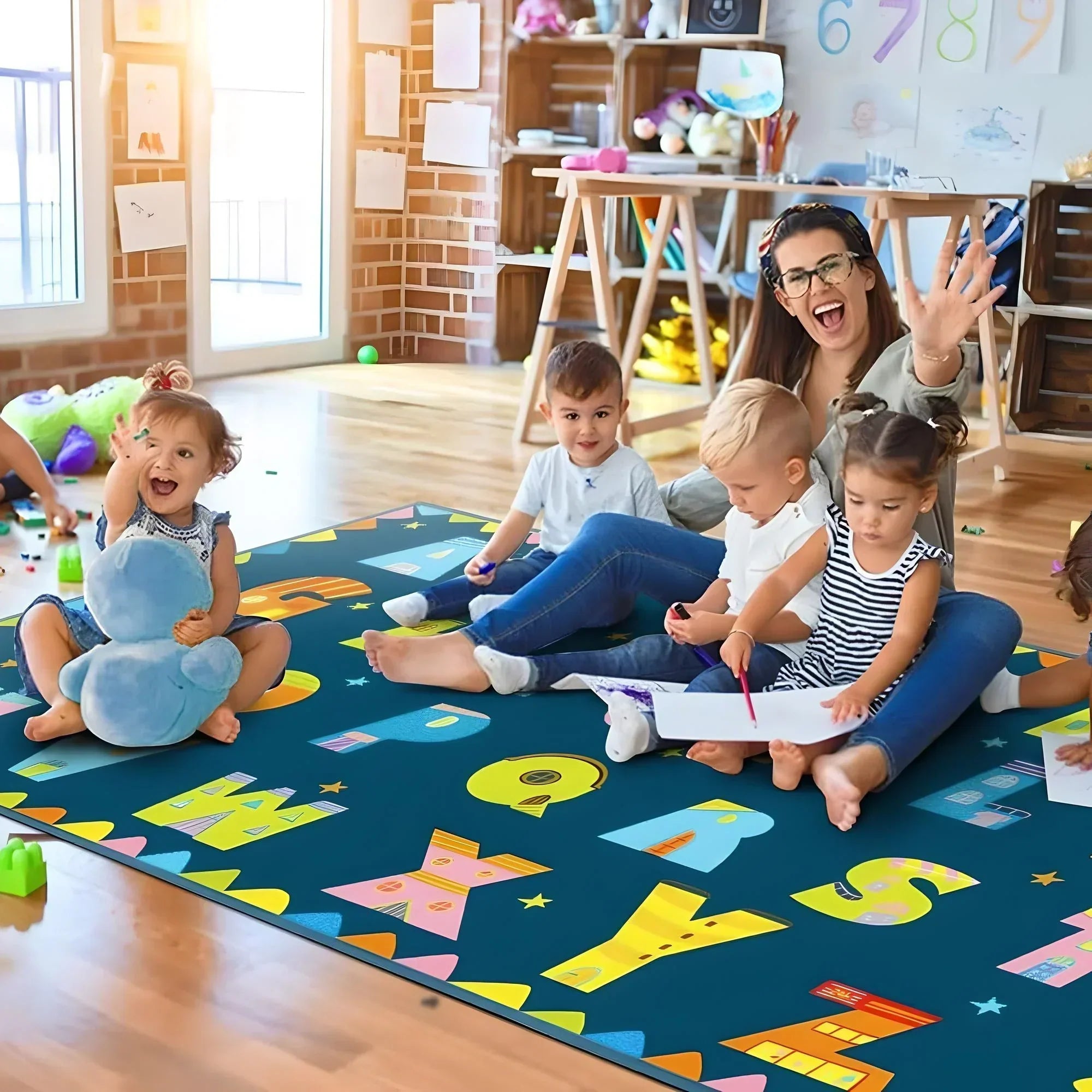The Critical Choice That Shapes Learning
When selecting classroom rugs, teachers face a decision that impacts far more than just aesthetics.
The strategic selection of classroom rugs represents one of the most impactful yet often overlooked investments in educational infrastructure, functioning as multidimensional tools that enhance pedagogy, improve classroom management, and create developmentally supportive environments.
Educational Rugs: Learning Tools Disguised as Floor Coverings
Academic Integration That Works
Today's educationally designed rugs incorporate specific learning standards directly into their patterns.
Mathematical classroom carpets feature coordinate grids, number lines, and geometric representations that align with spatial reasoning standards.
These aren't just pretty pictures - they're interactive learning stations that support curriculum goals daily.
Key Educational Features to Look For:
- Alphabet integration with clear, readable letters
- Number patterns and counting elements
- Geographic maps and cultural representations
- Shape recognition and color theory applications
- Sensory learning elements that support different learning styles
The Science Behind Educational Design
Research consistently shows that early childhood educators recognize that proper body positioning directly impacts cognitive development and learning readiness.
Quality classroom rugs provide crucial postural support during floor-based activities, allowing young children to maintain "ready to learn" positions without discomfort.
The Common Mistake: Busy Rugs in Calm Spaces
Why Overstimulating Patterns Backfire
One of the most frequent errors in classroom design involves placing visually busy, decorative rugs in areas designated for emotional regulation.
Colors from nature, such as blues and greens, tend to be more calming, while busy patterns can actually increase anxiety levels in children who need to self-regulate.
Calm-Down Corner Rug Guidelines:
- Choose solid colors or simple, nature-inspired patterns
- Avoid alphabet rugs or busy educational designs in quiet spaces
- Select soft textures that provide tactile comfort
- Ensure the rug size accommodates seated activities without crowding
Creating Visual Hierarchy in Your Classroom
Smart teachers use different rug types strategically throughout their space:
- Active Learning Areas: Educational rugs with letters, numbers, or interactive elements
- Quiet Zones: Solid or minimally patterned rugs in calming colors
- Group Meeting Spaces: Circle-time rugs with individual sitting spots
- Reading Corners: Cozy, decorative rugs that invite relaxation
Safety and Durability: Non-Negotiable Features
Booooom Jackson's Safety Standards
All quality classroom rugs, including those from Booooom Jackson's collection, meet rigorous safety requirements.
All rugs are rigorously tested to meet ASTM International and CPSC safety standards.
They're made with non-toxic, eco-friendly materials (free from PVC, phthalates, and lead) and feature slip-proof backing to prevent accidents.
Essential Safety Features:
- Slip-resistant backing systems
- Fire-resistant materials meeting school codes
- Hypoallergenic properties for sensitive children
- Easy-clean surfaces for hygiene maintenance
- Weighted bottom increases slip resistance by 80%, making it ideal for high-traffic game rooms or busy classrooms
Acoustic Benefits That Support Learning
The Hidden Impact on Comprehension
Educational acoustics experts measure classrooms by their signal-to-noise ratio—the relationship between instructional voice volume and background noise.
Strategic placement of dense classroom rugs can improve this ratio by 7-10 decibels without expensive acoustic panel installations.
This improvement particularly benefits:
- Students with auditory processing challenges
- English language learners
- Children with attention difficulties
- All students during quiet instruction time
Classroom Management Through Environmental Design
Reducing Behavioral Issues Proactively
Specialized classroom rugs featuring individual sitting spots eliminate disputes over personal space during circle time.
These visual cues reduce transition times between activities by an average of 4.5 minutes per transition—potentially reclaiming over 30 instructional minutes daily.
Management Benefits:
- Clear personal space boundaries
- Faster transitions between activities
- Reduced need for verbal corrections
- Visual organization for group formations
Developmental Support Through Design
Supporting Different Learning Needs
Our rugs are designed to spark creativity, motor skills, and teamwork: Toddlers practice balance and color recognition.
Older kids invent stories, solve "puzzle" challenges, or role-play. Teachers use them for interactive math games or geography lessons.
The tactile experience also supports children with sensory processing needs, providing the input some children require to focus and learn effectively.
This makes educational rugs particularly valuable in inclusive classrooms serving diverse learning needs.
Making the Right Choice for Your Space
Assessment Questions for Rug Selection
Before purchasing, consider these key factors:
For Educational Areas:
- Does the design align with your curriculum standards?
- Are the patterns clear and age-appropriate?
- Will the design facilitate or distract from learning activities?
- Does it support multiple subjects and activities?
For Calm Spaces:
- Are the colors soothing rather than stimulating?
- Is the pattern simple enough to promote relaxation?
- Does the texture invite comfort and security?
- Will it help or hinder emotional regulation?
Budget-Friendly Quality Investment
For educational and bulk orders, contact our team at support@booooomjackson.com. Many schools, daycares, and organizations qualify for special pricing and discounts.
Quality educational rugs represent a multi-year investment that pays dividends in improved learning outcomes and classroom management.
Maintenance and Longevity
Protecting Your Investment
Durable nylon fibers resist fading, reinforced edges prevent fraying, and proper care extends rug life significantly. Easily clean with a regular vacuum cleaner – no special equipment needed!
Care Tips:
- Daily vacuuming to prevent dirt accumulation
- Immediate spot cleaning of spills
- Professional deep cleaning during school breaks
- Rotating high-traffic rugs to distribute wear
The Bottom Line: Function Over Fashion
While decorative rugs have their place in creating welcoming classroom environments, educational rugs offer measurably better value for active learning spaces.
The key is strategic placement - using educational designs where learning happens and calming patterns where emotional regulation occurs.
Our rugs are hypoallergenic and resist dust mites, mold, and mildew. Perfect for kids with allergies or asthma, making them suitable for all classroom environments regardless of student health considerations.




Leave a comment
This site is protected by hCaptcha and the hCaptcha Privacy Policy and Terms of Service apply.